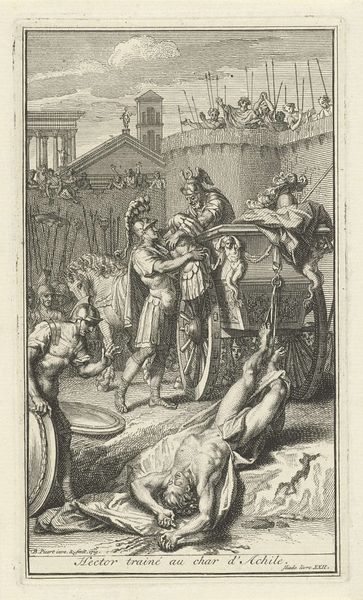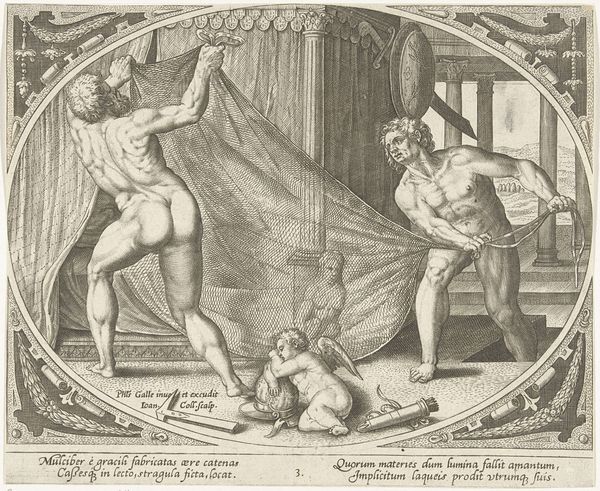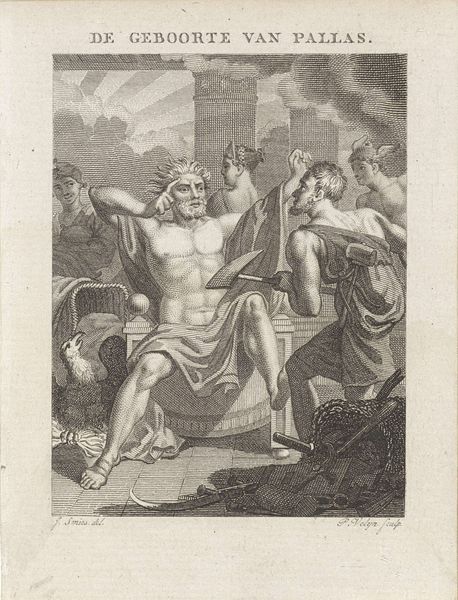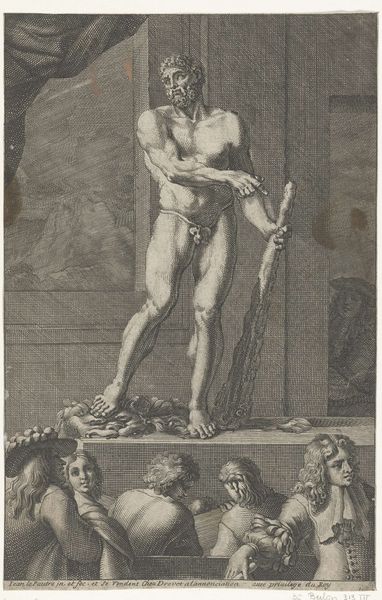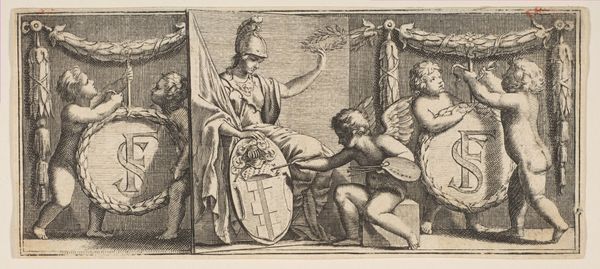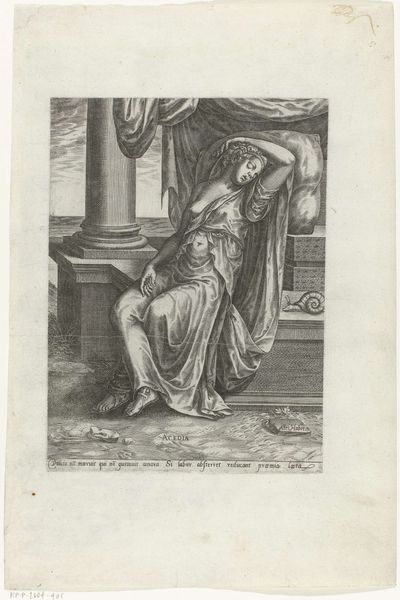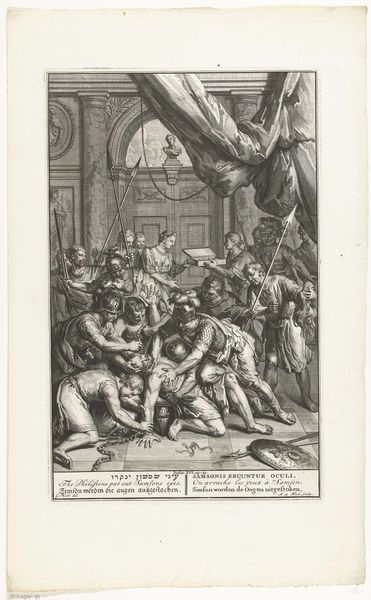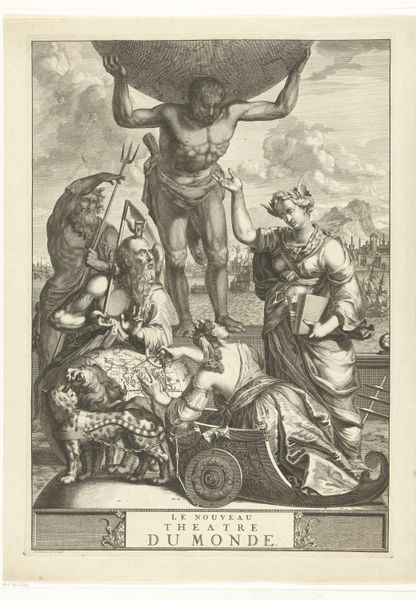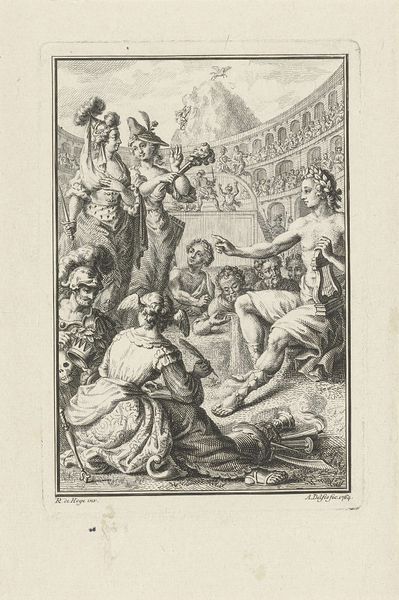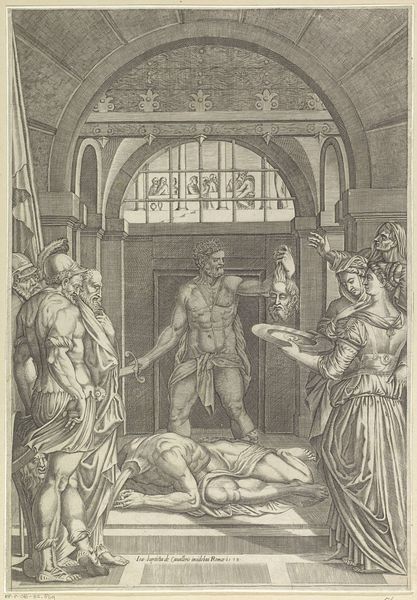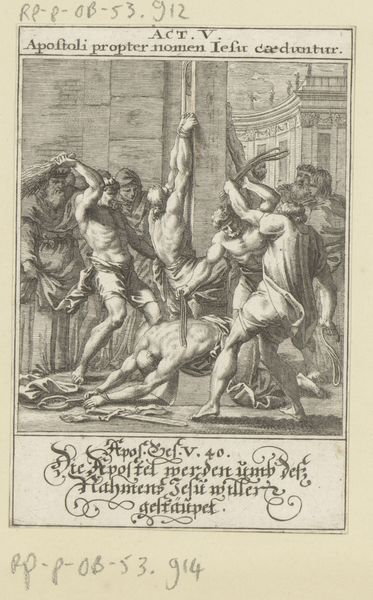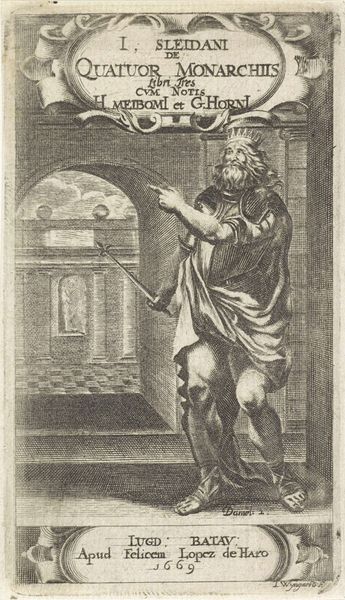
Dimensions: height 84 mm, width 66 mm
Copyright: Rijks Museum: Open Domain
Curator: Welcome. The engraving we're looking at is titled "Radbod laat zich niet dopen, 719," placing its creation somewhere between 1775 and 1835. Editor: The scene is strikingly confrontational, almost defiant. There's this muscular figure pulling away from what I assume is holy water, a powerful rejection radiating from his posture. It definitely gives off baroque sensibilities in its dramatic character blocking and classical line work. Curator: Absolutely. This print, which currently resides at the Rijksmuseum, portrays a pivotal moment of resistance during the Christianization of the Frisians. Radbod, their king, famously refused baptism, legend states, over concerns about the afterlife placement of his ancestors. Editor: And the symbols! Note the bishop with his staff, representative of divine authority, juxtaposed against Radbod, the figure seemingly stepping *away* from it with his foot planted upon an open book...it makes one wonder about whose sacred text is being questioned. The helmets of the guards standing next to him and surrounding the Bishop show that those institutions carry military support. The symbolism of the Frisian gods were more aligned with bravery, honor, and earthly values than in the ideas espoused by their rivals...this composition embodies those ideas. Curator: The artist, Willem van Senus, highlights a narrative ripe with cultural conflict. The print’s distribution, likely intended for a broad audience, served to reinforce Dutch Protestant identity through historical anecdote, even in a relatively neutral style like this one. It played upon longstanding anxieties related to Catholic authority in a rapidly secularizing Dutch Republic. Editor: But beyond the socio-political message, there's a potent timelessness to Radbod's rejection of baptism. The engraving seems to crystallize a common psychological struggle: reconciling the traditions of one's ancestry with newly introduced belief systems, especially when presented from institutions wielding considerable power. Curator: An astute point. The image reminds us that the shaping of Dutch cultural identity was often a complex and contested process, marked by moments of resistance as much as assimilation. Editor: Ultimately, seeing the clash of these symbols makes me question the universal need to find coherence between past and future, even when starkly conflicting ideologies enter the scene.
Comments
No comments
Be the first to comment and join the conversation on the ultimate creative platform.
